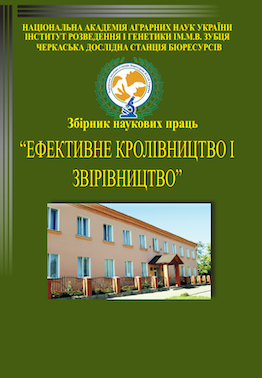EFFICIENCY OF USE OF INDEX ASSESSMENT IN THE SYSTEM OF SELECTION AND USE OF BREEDING LIVES OF THE POLTAVSKA SILLA BREED
DOI:
https://doi.org/10.37617/2708-0617.2020.6.38-47Abstract
Based on the study of rabbits of the Poltava silver breed (n = 310 heads), the efficiency of using index estimation in the system of selection and use of the breeding stock of rabbits was investigated on the basis of the rabbit farm of the Cherkassy Experimental Station of Bioresources. It has been found that the use of index breeding enables the effective selection of animals by live weight and the development of effective pairing schemes based on an objective assessment of the animals used for breeding. Among the rabbits of the study population, animals with a breeding index of 56-65 points (64-80%) prevailed. Only 20% of males had maximum values of the breeding index. Female had a wider range of variability in this indicator - 50-70 points. Their distribution was close to normal. The maximum proportion of animals was estimated at 56-60 points - 36%, respectively, the minimum percentage of animals (14%) had the maximum value of the breeding value index.
As a result of the selection of pairs based on index breeding, all breeding traits except the length of the body had differences in the offspring compared to the original livestock. The live weight index of animals aged 120 days in F1 offspring was found to be significantly lower by 181 g (P> 0.999) and 231 g lower in F2 animals (P> 0.999), which may be explained by the higher consolidation of parental livestock resulting from selection young for reproduction.
Genetic potential of productivity of rabbits of these breeds in the conditions of the studied farms have a high level of realization: in terms of body size - 96,3%, index of live weight - 94,2%, fertility - 86,9%. It should be noted that these values reflect not only the genetic component, but also its response to the environmental factors in which it is implemented. The indicator of phenotypic consolidation of the population by the studied traits averaged 79-83% and tended to increase with the next generation. Thus, the above data allow us to argue that the use of scientifically valid pairing schemes allows to increase the level of animal consolidation in the next generation both on one selected trait and on a complex of traits.


